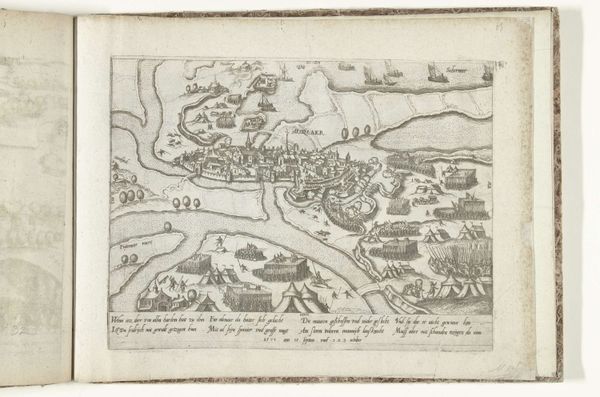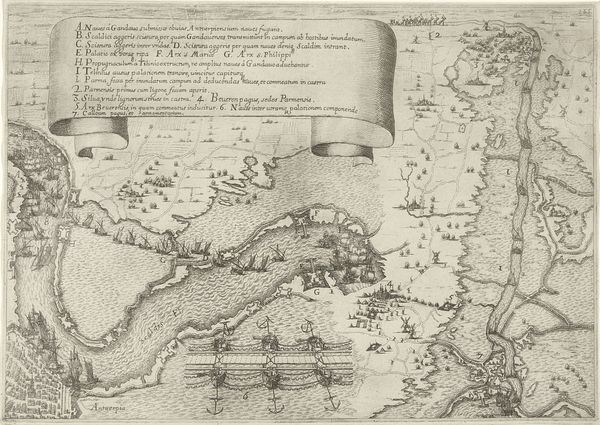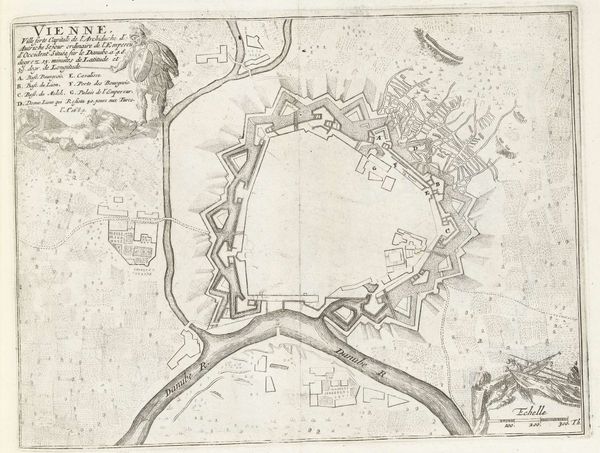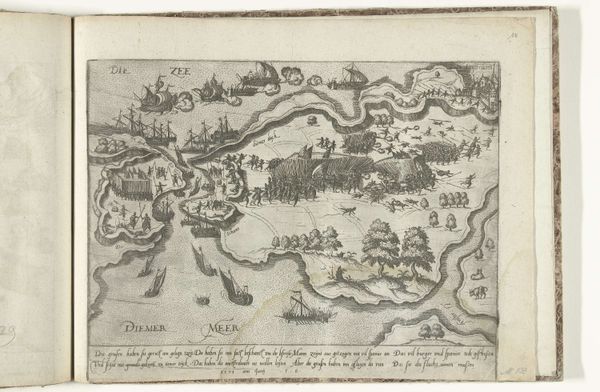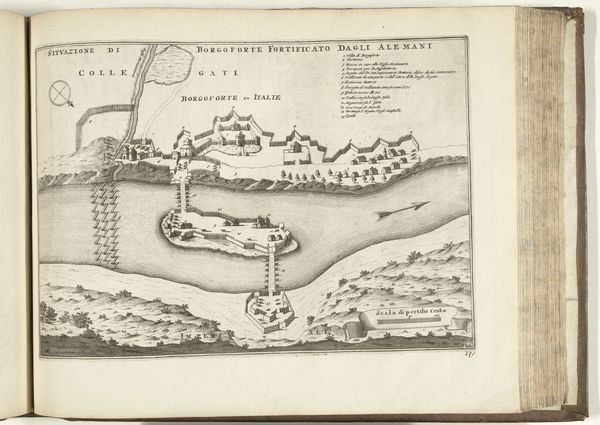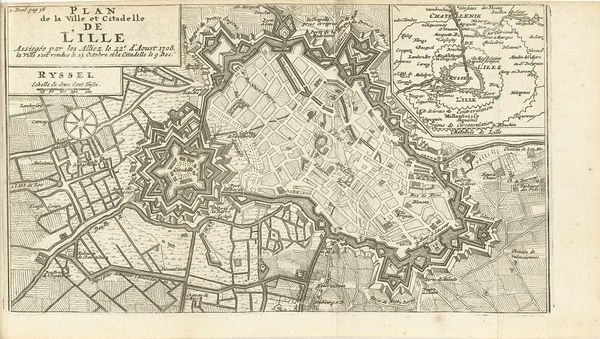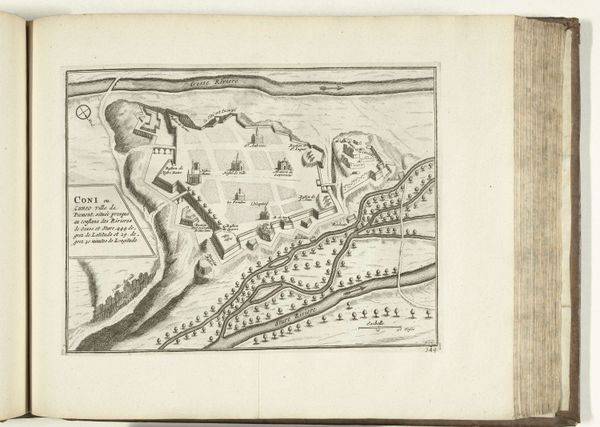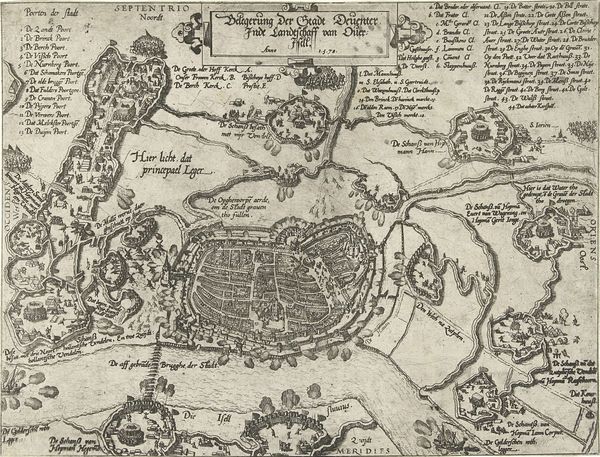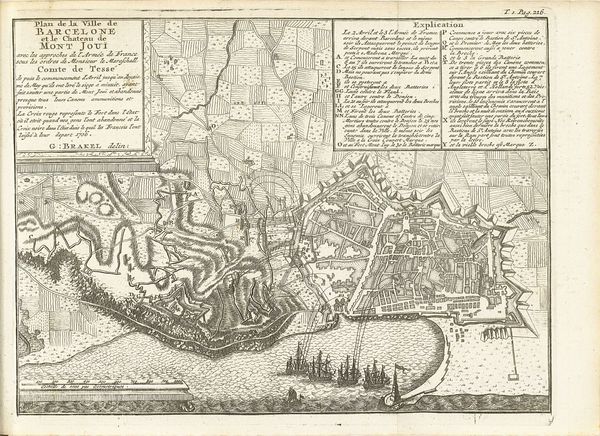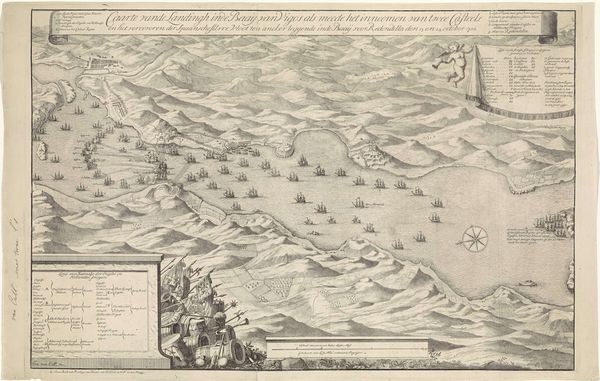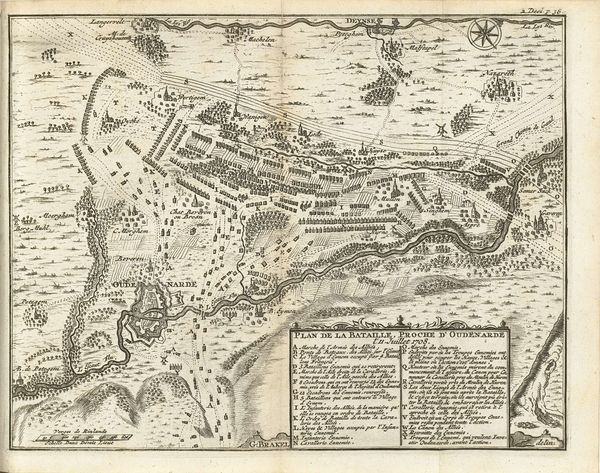
drawing, ink, engraving
#
drawing
#
baroque
#
pen drawing
#
landscape
#
ink
#
cityscape
#
engraving
Dimensions: height 147 mm, width 225 mm
Copyright: Rijks Museum: Open Domain
Curator: This detailed engraving is titled "Beleg van Landau, 1702," which translates to "Siege of Landau, 1702," crafted between 1714 and 1716. It’s attributed to Matthijs Pool and now resides here at the Rijksmuseum. Editor: It has a feeling of distance and remove, like looking at a game board. All those precise lines depicting fields and fortifications... it’s very controlled, yet the scene it represents, a city under siege, must have been anything but. Curator: Precisely. It's a baroque piece, typical of the era’s interest in capturing strategic detail alongside a sense of grand spectacle. Engravings such as this served as both documentation and propaganda, circulated to inform and impress. Look at the meticulous detail applied to the fortifications surrounding the city; stars protecting the inner settlement. Editor: The star shape resonates, doesn’t it? Stars traditionally symbolize guidance and protection. Here, though, it feels less about spiritual guidance and more about physical defense, doesn’t it? Also the symbolism of a net with a center: The people inside the protection net. Curator: I agree. We have to remember Landau's geographical position, the constant to and fro of claims during Louis XIV reign made this land a high stake. Notice the detailed notes identifying the attack points of the Imperial, Dutch, and Brandenburg forces. This image's primary purpose was communication. Editor: It also communicates the ambition and technological advancement of the era: The clarity! Also look at how even the landscape seems geometric, categorized by fields in little neat boxes. Nature is also controlled here. Curator: That geometric order reflects the desire to control and contain both nature and conflict. It's a visual metaphor for the era’s aspirations, which is particularly striking. Maps themselves served as instruments of power in the 18th century. Editor: Exactly. Looking at this map, you don’t just see Landau. You see the mentality of a time—a need to order chaos through meticulously rendered lines and shapes, trying to impose our perception of security. It reminds one of ourselves; of humans through time. Curator: Absolutely. Reflecting on Pool's representation, it’s intriguing to consider how even in seemingly objective depictions, inherent biases shape how historical events are perceived and communicated. Editor: Indeed. This artwork reminds us that images are not merely records of history but complex artifacts of cultural memory. It is through them we learn who we have been, but more important, who we could be.
Comments
No comments
Be the first to comment and join the conversation on the ultimate creative platform.
